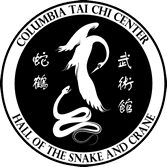October 8, 2014
Qualities of a Tai Chi Practice Space
By De Anna Beasley
As you progress in your training, you’ll eventually want to get in the habit of a regular practice when you’re not in class and that involves finding a training space. Depending on your mood, time of day or season, certain places may or may not appeal to you. Ultimately, the key to gaining the benefits of Tai Chi is to practice as often as possible. Don’t let a lack of space deter you. In fact, you don’t need much of it though certain spaces can inspire a productive practice with their qualities. Here are some qualities to consider when looking for a place to practice Tai Chi.
Indoor vs. Outdoor
The outdoors is probably the most recognized location for Tai Chi. Most people’s introduction to the art likely involved seeing a group of people practicing in the park. Tai Chi is an art that emphasizes natural movement so it makes sense to practice in a natural location such as a garden, beach or mountain forest. The advantages to an outdoor training space include fresh air (which is great for Qigong), freedom of movement, exposure to natural light and reduced stress levels. For these reasons, some may argue that Tai Chi should only be practiced in a natural environment but considering that, for many of us, a good portion of our lives are spent indoors, it’s a good idea not to discount the indoor environment for quality practice space. An indoor practice space can be beneficial in that there are fewer distractions. Students new to meditation and Tai Chi may find an indoor environment helpful in developing the necessary quiet within themselves.
Flat vs. Uneven
One of the key aspects of Tai Chi is developing good root. In the beginning of your training, it’s not a bad idea to find a training space with a flat, even surface. An indoor space is ideal for this particular quality but outdoor locations such as a porch/terrace, basketball/tennis court or parking lot can work as well. As you advance in your training, you may want to challenge yourself by developing root on uneven surfaces and here is where training on grass or sand can work for you. If there’s a disadvantage to training on an uneven surface it’s the increased risk of injury, especially if you’re practicing more advanced forms. Personally, I like doing walking exercises on uneven surfaces. Weapons forms I save for the flat, even surfaces.
Public vs. Private
Tai Chi is an art of yielding to the forces in one’s environment. Most of us probably won’t have to battle fighting opponents on a regular basis but we all have to deal with the stresses of daily life. Things will never be exactly as we want them and learning how to yield and adjust to what life throws at you is a valuable lesson of the art. Practicing in a public space can provide the opportunity to work on finding stillness despite the distractions. Our students have practiced stances while standing in line at the grocery store, Qigong in the airport and Wu Chi on their commute to work. Importantly, mentally going through the form and postures is a great benefit to your training and can be done anywhere. If you decide to practice form in a public setting such as a park be prepared for the possibility of becoming a Tai Chi ambassador for curious onlookers. You may meet like-minded individuals who are also interested in studying the art.
Small vs. Large
Many people have the misconception that you need a lot of space to practice Tai Chi. Having plenty of space is ideal, especially if you’re new to the art and learning, for example, how to the feel the circles in your movement.
However, parts of your training such as change stepping, active stepping and Qigong can be done in a small space. The suitability of a space depends on your training objectives. If you want to work on big or long series of movements then a large space can work for you. However, keep in mind that it is possible to do the entire Tai Chi form in a space as big as an elevator so don’t feel limited in your training options.
The Gwan (School)
This should go without saying but being part of a school with a respectable lineage is the best thing you can do for your art and practice. Not only do you have a teacher to guide your practice, you also have students of various levels to inspire and motivate you. Additionally, Tai Chi is about harmonizing with your environment and that includes the people in it. Opportunities to do push hands and self-defense will quickly enhance your understanding and skill. A school is a great place to find that sort of interaction.
Ultimately, there is always a space for Tai Chi practice. Challenge yourself to find a moment and space to practice your art! Remember to share with us where you practice!
Check out the list of schools affiliated with the Columbia Tai Chi Center on our website. Click here.


